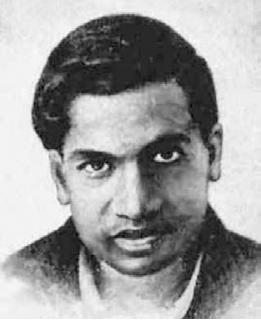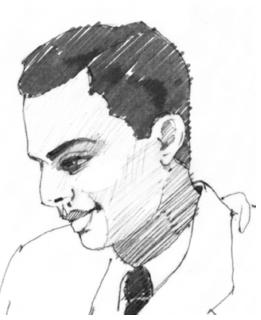Mathematics in the modern era
By Prof. Vijaya Kumar Murty
In more recent times, there have been many important discoveries made by mathematicians of Indian origin. We shall mention the work of three of them: Shrinivas Ramanujan, Harish-Chandra, and Manjul Bhargava.
Srinivas Ramanujan[edit]
Ramanujan (1887–1920) is perhaps the most famous of modern Indian mathematicians. Though he produced significant and beautiful results in many aspects of number theory, his most lasting discovery may be the arithmetic theory of modular forms. In an important paper published in 1916, he initiated the study of the τ function. The values of this function are the Fourier coefficients of the unique normalized cusp form of weight 12 for the modular group SL2(Z). Ramanujan proved some properties of the τ function and conjectured many more. As a result of his work, the modern arithmetic theory of modular forms, which occupies a central place in number theory and algebraic geometry, was developed by Hecke.[1]
Harish Chandra[edit]
Harish-Chandra (1923–83) is perhaps the least known Indian mathematician outside of mathematical circles. He began his career as a physicist, working under Dirac. In his thesis, he worked on the representation theory of the group SL2(C). This work convinced him that he was really a mathematician, and he spent the remainder of his academic life working on the representation theory of semi-simple groups. For most of that period, he was a professor at the Institute for Advanced Study in Princeton, New Jersey. His Collected Papers published in four volumes contain more than 2,000 pages.[2] His style is known as meticulous and thorough and his published work tends to treat the most general case at the very outset. This is in contrast to many other mathematicians, whose published work tends to evolve through special cases. Interestingly, the work of Harish-Chandra formed the basis of Langlands’s theory of automorphic forms, which are a vast generalization of the modular forms considered by Ramanujan.[3]
Manjul Bhargava[edit]
Manjul Bhargava (b. 1974) discovered a composition law for ternary quadratic forms. Identifying a set of importance and discovering an algebraic structure such as a composition law is an important theme in mathematics. Karl Gauss, one of the greatest mathematicians of all time, showed that binary quadratic forms, that is, functions of the form
ax² + bxy + cy²
where a, b, and c are integers, have such a structure. More precisely, the set of primitive SL2(Z) orbits of binary quadratic forms of a given discriminant D has the structure of an abelian group. In fact, this is the ideal class group. After this fundamental work of Gauss, there had been no progress for several centuries on discovering such structures in other classes of forms. Manjul Bhargava’s stunning work in his doctoral thesis, published as several papers in the Annals of Mathematics, shows how to address this question for cubic (and other higher degree) binary and ternary forms.[4] The work of Bhargava, who is currently Professor of Mathematics at Princeton University, is deep, beautiful, and largely unexpected. It has many important ramifications and will likely form a theme of mathematical study at least for the coming decades.
Notes & References[edit]
- ↑ Ramanujan’s works are available in Collected Papers of Srinivasa Ramanujan, eds G H Hardy, P V Seshu Aiyar, and B M Wilson (Urbana: University of Illinois, 1927).
- ↑ Harish-Chandra, Collected Papers, 4 volumes, ed. V S Varadarajan (New York: Springer-Verlag, 1981).
- ↑ For a discussion, see V Kumar Murty, ‘Ramanujan and Harish-Chandra’, Mathematical Intelligencer, 15 (1993), 33–39.
- ↑ M Bhargava, ‘Higher Composition Laws’, Annals of Mathematics, 159/1 (2004), 217–50; 159/2 (2004), 865-86.
- Originally published as part of the article "A Brief History of Indian Mathematics" by Prabhuddha Bharata September 2007 edition. Reprinted with permission.



